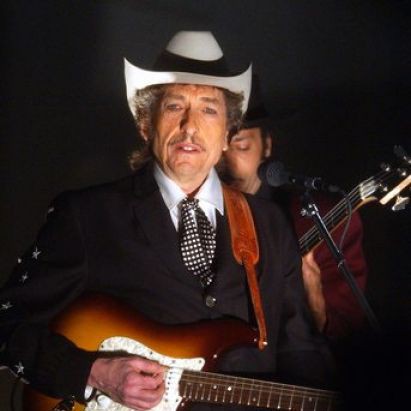Let’s bring the Bob Dylan – Sam Shepard relationship to a close. In July 1987 Shepard published an “interview” with Dylan in Esquire under the title “True Dylan”. Written in the form of a one-act play, the piece was later anthologized as “Short Life of Trouble” in Shepard’s 2012 book Fifteen One-Act Plays.
I’m not sure what Esquire might have made of this interview, so let’s credit them for the fact that they even ran it. The play opens with a character named “Sam” visiting the home of a musician named “Bob”, with a tape recorder and a six-pack of beer. Bob spends a good portion of the play on the phone trying to get the area code for Tulsa, and trying to decide if he is going to attend some unspecified party or event. When Bob is on the phone Sam plays back the recording of their conversation, only to find it gone – replaced by the piano music of Jimmy Yancey. There are two car accidents during the play, though neither of them is noticed by either of the characters. They talk of polka music, James Dean, and angels.
To me, this is the best interview with Dylan that I’ve yet read. As I’ve noted now twice, Shepard seems to get Dylan in a way that others don’t – or at least his myth-making of Dylan matches closely with my own. We don’t learn much about Dylan here that we don’t already know about his relationship to Woody Guthrie, or his taste in music (Hank Williams, of course!), but Shepard has an incredible ear for dialogue, for phrasing, for the pauses that seem to characterize Dylan’s way of speaking and thinking. It seems to me that Shepard captures this exceptionally well.
The piece ends with a beautiful moment – with Dylan reflecting on his motorcycle crash. The two talk at length about the deaths of James Dean (Dylan brings it up very early in the conversation, that he’d just been out to that spot in Paso Robles) and Hank Williams (Shepard noting that he’d seen the car that Williams died in), before Shepard asks about the mythical motorcycle crash. It’s worth quoting Dylan at length about his recuperation:
“Spent a week in the hospital, then they moved me to this doctor’s house in town. In his attic. Had a bed up there in the attic with a window looking’ out. Sarah stayed there with me. I just remember how bad I wanted to see my kids. I started thinking’ about the short life of trouble. How short life is. I’d just lay there listening’ to birds chirping. Kids playing in the neighbour’s yard or rain falling by the window. I realized how much I’d missed. Then I’d hear the fire engine roar, and I could feel the steady thrust of death that had been constantly looking over its should at me. (Pause) Then I’d just go back to sleep.”
That’s the best thing I’ve read about Dylan’s transformation in the late-1960s, and it is a beautiful evocative piece. I’m not certain that Dylan said it – Bob clearly tells Sam that he’s free to make up anything that he wants in the play – but I hope that he did.
I can’t access an actual copy of the Esquire piece, so I don’t know how it was illustrated. That photo above is from 1975 – Dylan, Shepard and Allen Ginsberg at Jack Kerouac’s grave.

